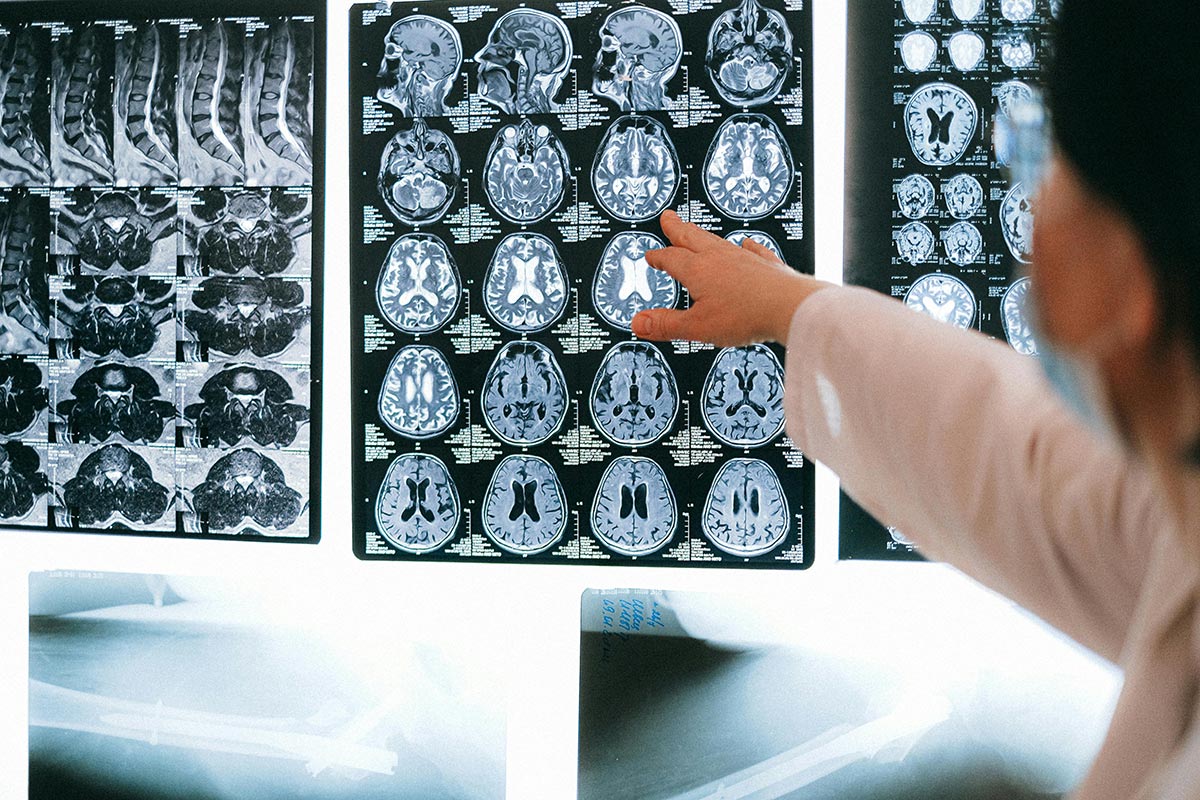

Childhood Trauma and Substance Use
Understanding Childhood Trauma
Childhood trauma encompasses experiences of significant emotional or physical distress encountered during formative years. This can include various adverse childhood experiences (ACEs) such as physical and emotional abuse, neglect, and household dysfunction. The effects of these traumas are profound, leading to lasting impacts on an individual's mental health and behaviors. Research indicates that individuals with higher exposure to ACEs are more likely to encounter addiction issues later in life.
Type of TraumaDescriptionPhysical AbuseIntentional physical harm to a childEmotional AbuseVerbal abuse or emotional neglect impacting self-esteemSexual AbuseInappropriate sexual conduct with a minorHousehold DysfunctionLiving with substance abuse, mental illness, or parental separation
Impact on Brain Development
Childhood trauma significantly impacts brain development, particularly affecting the limbic system structures, including the amygdala and hippocampus. These areas of the brain are crucial for emotional regulation, memory processing, and physiological responses [2]. Studies have established that individuals with a history of trauma are more susceptible to psychiatric conditions, including post-traumatic stress disorder (PTSD) and substance use disorders. In fact, adolescents who have experienced abuse are three times more likely to engage in substance use.
Additionally, the disruptions caused by trauma can lead to cognitive dysfunction and emotional dysregulation. These alterations can manifest in dissociative behaviors—mental processes that disconnect thoughts, memories, feelings, and identity [4]. Both dissociation and heightened sensitivity to stressors can result in increased risks of developing addictive behaviors as a means of coping with unresolved trauma.
Understanding the relationship between childhood trauma and the subsequent risk of substance use reinforces the importance of effective treatment and supportive interventions later in life. The impact of childhood trauma on substance use highlights the need for increased awareness and preventative measures to address these issues early. For more information on support systems available, explore understanding insurance coverage for substance use treatment and financial planning for addiction recovery.
Coping Mechanisms and Addiction

Childhood trauma can significantly influence the coping strategies individuals adopt later in life. This section explores the role of substance use as a coping mechanism and how it hijacks the brain's reward system, often leading to addiction.
Substance Use as a Coping Mechanism
Individuals who have experienced childhood trauma often turn to substance use or self-harm as a means of coping. These behaviors serve as temporary relief from emotional pain, providing a temporary escape from the negative effects of trauma. Research indicates that substance use is a common behavior among those with trauma histories, as it helps manage overwhelming feelings and difficult memories [2].
The following table summarizes the common coping mechanisms associated with childhood trauma and their prevalence in substance use:
Coping MechanismDescriptionPrevalence in Substance UseSubstance UseUsing drugs or alcohol to cope with stressHighSelf-HarmEngaging in harmful physical behaviorModerateRisky BehaviorsEngaging in behaviors that pose potential harmHigh
Brain's Reward System Hijacking
The brain's reward system plays a crucial role in how individuals respond to substances. When individuals use substances, they stimulate the brain's reward pathways, leading to feelings of pleasure and reinforcement of the behavior. This hijacking of the reward system can create a cycle where individuals continue to seek out substances despite understanding their harmful effects.
Childhood trauma can alter the development of critical brain structures such as the limbic system, which includes the amygdala, hippocampus, and nucleus accumbens. These areas are vital for emotional regulation and reward processing NCBI Bookshelf. Heightened sensitivity and emotional dysregulation may lead individuals to engage in addictive behaviors as they seek to gain relief or pleasure [2].
A notable finding indicates that emotional abuse correlates strongly with substance use behaviors. Specifically, emotional abuse has been linked to increased alcohol use scores, suggesting that the type of trauma experienced can significantly impact substance use patterns [5].
Understanding these mechanisms is crucial for developing effective treatment strategies that address the root causes of addiction in individuals affected by childhood trauma.
Attachment Systems and Relationships

Childhood trauma significantly affects attachment systems, leading to alterations in endorphin systems and impacting how individuals respond to relationships. Understanding these changes is essential to grasping the broader implications of trauma on substance use behaviors.
Impact on Endorphin Systems
Childhood trauma often disrupts the normal development of endorphin systems in the brain. Endorphins play a crucial role in regulating mood and emotional responses. When traumatic experiences occur in early life, such as emotional abuse, they can negatively impact the production and functioning of these natural painkillers. Research has shown that emotional abuse in particular is connected to increased substance use, including higher alcohol consumption levels [5].
Type of TraumaImpact on Endorphin LevelsPhysical AbuseModerate DisruptionEmotional AbuseSignificant DisruptionSexual AbuseHigh Disruption
Increased levels of stress hormones due to childhood trauma can also inhibit the body’s ability to produce endorphins effectively. This deficiency can lead individuals to seek alternative methods, such as substance use, to cope with emotional pain and achieve pleasure.
Altered Responses to Relationships
The alteration of endorphin systems due to childhood trauma affects how individuals form and maintain relationships. Many individuals with a history of trauma exhibit difficulties in trusting others and may engage in unhealthy attachment styles [2]. These issues often manifest as avoidance or anxious attachment behaviors, which further complicate their ability to connect with others in a healthy manner.
Childhood trauma increases the likelihood of developing maladaptive coping strategies, such as seeking out substances for solace or comfort. The desire for immediate emotional relief can lead to a cycle of dependence on substances, as they may serve as a temporary escape from relational discomfort and trauma-related distress.
Relationship ResponseDescriptionAvoidant AttachmentWithdrawal from relationships to avoid potential pain.Anxious AttachmentSeeking constant reassurance and fear of abandonment.
The dynamic between trauma exposure and an individual's attachment systems illustrates how past experiences can carry forward into adulthood, influencing both interpersonal relationships and susceptibility to substance use disorders. For further insights on the connection between childhood trauma and addiction, it is beneficial to explore related topics such as the emotional aspects of financial planning for addiction recovery or the importance of understanding insurance coverage for treatment options available.
Trauma Exposure and Substance Misuse
Escaping the Effects of Trauma
Individuals exposed to childhood trauma often seek ways to manage their pain and distress. Unfortunately, many resort to substance use as a means of escape. The experience of trauma can lead individuals to engage in addictive behaviors that provide temporary relief or pleasure. This self-medication can manifest in various forms, including drug use, high-risk behaviors, or self-injurious actions.
Coping with trauma through substance misuse ties into the brain's reward system, triggering cravings for substances even when individuals are aware of the negative consequences. Many use substances as a way to regain emotional control after experiencing trauma, engaging in disordered eating and repression of emotions as part of their attempts at emotional regulation [4].
Table 1 below illustrates the types of coping mechanisms individuals with childhood trauma may engage in:
Type of BehaviorDescriptionSubstance UseUse of drugs or alcohol to manage pain or distress.Self-HarmActions like cutting or burning to cope with emotional pain.Disordered EatingRestricting food intake or bingeing as a form of self-control.High-Risk BehaviorsEngaging in unsafe activities to escape emotional turmoil.
Manifestation in Addictive Behaviors
Trauma can significantly impact an individual's relationship with substances, leading to various addictive behaviors. Studies indicate that a higher prevalence of childhood trauma correlates with substance abuse issues later in life. For instance, there is an additive effect between types of childhood trauma and past substance dependence, exemplified by increased rates of PTSD symptoms in individuals with a history of cocaine dependence.
The negative impact of trauma on attachment systems also alters one's responses to relationships, which may further contribute to reliance on substances [2]. This dysfunctional relationship with oneself and others can perpetuate a cycle of addiction as individuals attempt to escape the emotional pain stemming from their traumatic experiences.
Understanding these dynamics is crucial for addressing the impact of childhood trauma on substance use behaviors and informing effective treatment interventions. For more information on substance use treatment options, consider exploring topics on financial planning for addiction recovery or understanding insurance coverage for substance use treatment.
Long-Term Consequences
Substance use behaviors stemming from childhood traumas can lead to several long-term consequences that impact both health and social relationships.
Effects on Health and Lifespan
Repeated exposure to childhood trauma can result in significant changes in the brain and nervous system, which may increase health-risk behaviors like substance use. Research indicates that survivors of childhood trauma are at a higher risk for developing long-term health issues, including but not limited to diabetes and heart disease. In some cases, these individuals may experience a shorter lifespan.
The table below summarizes the prevalence of health issues associated with childhood trauma:
Health IssuePrevalenceDiabetesIncreased riskHeart DiseaseIncreased riskMental Health DisordersIncreased riskShortened LifespanCommon
Involvement with Systems and Relationships
Trauma exposure often leads to greater utilization of health and mental health services, as well as increased interactions with child welfare and juvenile justice systems [6]. Adult survivors of childhood trauma may struggle significantly in establishing and maintaining fulfilling relationships.
Emotional regulation can be disrupted due to early traumatic experiences, leading to struggles with feelings such as anger, anxiety, and sadness. Survivors may find it challenging to regulate their emotions, which can manifest in difficulties with employment and personal relationships.
Additionally, those with a history of childhood trauma frequently exhibit a more severe profile regarding substance use characteristics. They may initiate substance use at an earlier age, report more extensive histories of polydrug use, and showcase increased severity of dependence compared to those who experienced trauma later in life.
This interplay between trauma and substance use highlights the necessity for targeted intervention and support systems focused on addressing the underlying trauma to improve long-term outcomes. Resources and support methods, such as financial planning for addiction recovery and understanding service coverage, are vital components in the treatment of those affected.
Protective Factors and Intervention
Addressing the impact of childhood trauma on substance use requires a multi-faceted approach that includes protective factors and interventions. Understanding how to reduce the adverse effects of trauma and implementing preventative measures can significantly promote healing and recovery.
Reducing Adverse Trauma Impact
Childhood trauma compromises neural structures, leading to increased vulnerability to psychiatric illnesses, including PTSD and substance use disorders. Studies indicate that adolescents who experienced any form of abuse are three times more likely to report substance abuse [3]. To mitigate these effects, early intervention is crucial.
Intervention TypeDescriptionEffectivenessTrauma-Informed CareFocuses on understanding, recognizing, and responding to the effects of all types of trauma.Improves emotional resilience and reduces symptoms of PTSD.Counseling and TherapyProvides a safe space for individuals to process and heal from trauma through various therapeutic modalities.Reduces substance use and promotes coping strategies.Family Support ProgramsEngage family members to foster healthy communication and support networks.Strengthens attachment and protective factors against substance misuse.
Preventative Measures and Support
Preventative measures play a vital role in protecting children from the adverse effects of trauma and reducing the likelihood of substance use later in life. Promoting healthy relationships and environments is key to fostering resilience.
MeasureDescriptionOutcomesEducational ProgramsPrograms that teach coping skills and emotional regulation to children and adolescents.Reduces the risk of substance use by improving self-awareness and decision-making skills.Substance Use Awareness CampaignsInitiatives that educate young people about the dangers of substance misuse and the importance of mental health.Increases awareness and encourages help-seeking behavior.Community SupportBuilding strong community networks that provide support services for families and children.Enhances resilience and protective factors while reducing isolation.
Traumatic stress reactions often lead to self-medication behaviors, such as substance use, as individuals attempt to regain emotional control. This can spiral into further emotional dysregulation [4]. Providing effective support systems and interventions can hinder this cycle and lead individuals toward healthier coping mechanisms.
Through effective interventions and protective measures, the impact of childhood trauma on substance use can be reduced. For further insight into financial aspects of seeking treatment, explore our articles on understanding insurance coverage for substance use treatment and financial planning for addiction recovery.
References
[2]:
[3]:
[4]:
[5]:
[6]:
[7]:
.svg)





